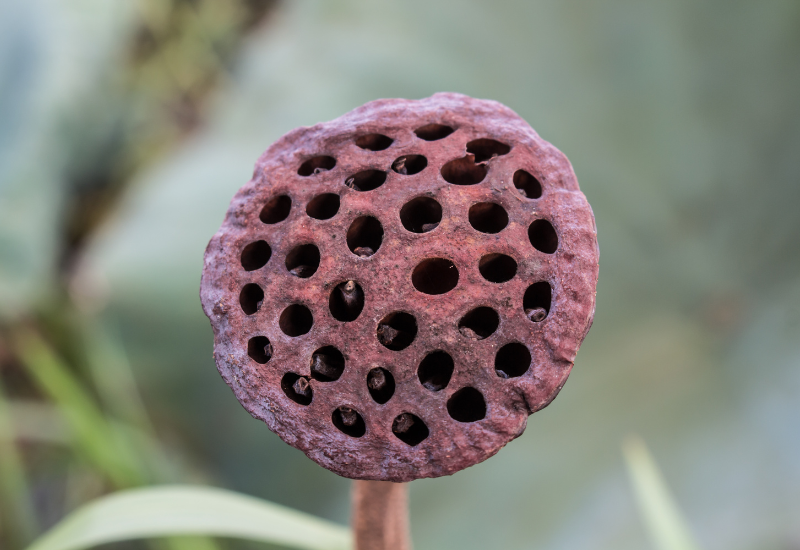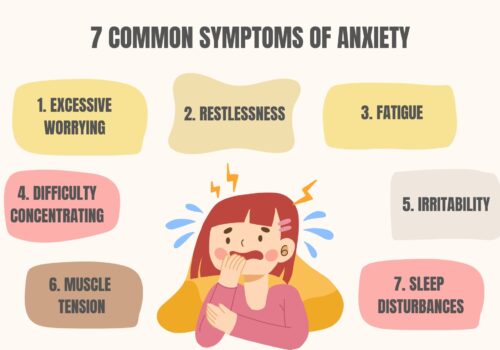- What is Trypophobia?
- What Triggers Trypophobia?
- Is Trypophobia Common?
- What Are the Symptoms and Causes of Trypophobia?
- What Causes Trypophobia?
- What Are the Possible Complications Associated With Trypophobia?
- How is Trypophobia Diagnosed?
- What is the Trypophobia Test?
- What is the Cure for Trypophobia?
- Concluding Thoughts
There are a lot of phobias, and things that may look normal to us can be scary to others. Here is the phobia of holes, Trypophobia. People with Trypophobia can get scared or disgusted by seeing holes or patterns like holes. Even simply shaped holes can cause them anxiety.
The hollow or dark holes are not the only things from which they can get scared; people suffering from Trypophobia can also get scared of holes in sunflowers, sponges, fruits, and honeycombs. It is one of the anxiety disorders, and Trypophobiacs can respond to any of the patterns they see. Even many people are not afraid of the holes. If you are having even mild Trypophobia, get yourself therapy so you can recover soon and manage the repulsions that you get.
What is Trypophobia?
Trypophobia is considered a repulsive behavior or aversion to any objects that have numerous holes. Not only holes, but they can also give a sudden and unexpected reaction to repetitive patterns. It is not necessary that they will be afraid of holes, they can also get afraid of any other patterns as well.
What Triggers Trypophobia?
There are many things upon which a person having Trypophobia can get triggered. Almost 90% of people who suffer from Trypophobia react to holes or shapes that are close to holes. They can easily get triggered by seeing stuff like –
- Cheese with holes in it
- Fruits with seeds including papaya, raspberries, kiwi, strawberries, and others
- Bread and bagels with seeds
- Seed pods of flowers
- Insects and bees
- Shoe soles
- The skin of animals especially the reptiles
- Sponges
There can be other things as well. The speakers have holes, sweaters, and crochets, which can also trigger such people.
Is Trypophobia Common?
Many people are even not aware of trypophobia all around the world. According to studies conducted, almost 17% of the total population in the world has Typophobia. But it is of different degrees and variations
A total of 17% of adults and children which means one in 6 people can be diagnosed with trypanophobia. It cannot be exaggerated every time. Rather, even some people won’t even know that they have trypophobia.
Nowadays many people are getting well aware of trypophobia. But still, a lot of awareness needs to be spread. The reach of social media has enabled many people to understand what exactly trypophobia is and how people react. Even there are many people who also reacted to clusters of cameras.
There are many American TV shows in which clusters of repeated patterns are shown. The people got triggered over this.
What Are the Symptoms and Causes of Trypophobia?
There is no exact reason why people develop trypophobia. Still, experts are working on it. Only one reason is figured out so far and it is that the brain figures out the holes as a danger. Even the brain subconsciously relate the holes to venomous snake or even dragon skin. The holes can also remind us of anything related to skin disease.
Even the brain takes more energy to process the whole pattern and thus creates triggering in people. There can be an obsessive-compulsive disorder (OCD).
What Causes Trypophobia?
Research indicates that the majority of individuals with trypophobia are predominantly female. They can get it if they are suffering from
- Stress.
- Anxiety
- Depression.
- Obsessive-compulsive disorder.
Most women get depression because of postpartum conditions and it leads to phobias like trypophobia.
Many people still wonder what are the symptoms of a trypophobia. Below are some of them
- Choking
- Dry mouth
- Chills
- Fast pulse
- Fast breathing
- Terror
- Disgust feel
- Pale skin
- Sweating
- Nausea
- Shaking
- Trembling
These are the symptoms of trypophobia but there are more that are being diagnosed by medical experts from time to time.
What Are the Possible Complications Associated With Trypophobia?
Trypophobia can occasionally make it difficult for you to interact socially, and attend school, or work. You might encounter:
- Anxiety.
- Fear strikes.
- issues with sleep or insomnia.
- Stress and mood swings have increased.
How is Trypophobia Diagnosed?
Eventually, trypophobia is not considered as any disorder. No big institutes or research centers have considered it a disorder. There are several reasons behind it, the main reason is that it can be uncomfortable to diagnose. As trypophobia is not considered a disorder, therefore no criteria are set to diagnose it. But if you really want to discover or diagnose it, there is a trypophobia test.
Even there are many online tests that can help discover if you are having trypophobia or not. Make sure that you are performing a test that cannot collect your personal data of yours.
What is the Trypophobia Test?
It is a simple and easy test in which you will be displayed some images. There are probably 8 images shown for some seconds. Images may contain holes, patterns, or clusters through which you can assess trypophobia.
You will be asked how long the image is viewed to you and how long did you see the image. The estimates will be compared. As a result, it will be concluded if you are having trypophobia or not.
If your ratio is higher and it indicates that you are having trypophobia, it means you must have to go see a specialist.
What is the Cure for Trypophobia?
Trypophobia is an issue that affects the ability to enjoy life. It will stop you from getting engaged in different activities. The best cure for trypophobia is exposure therapy.
In order to help you control your reactions, this therapy gradually exposes you more and more to trypophobia triggers. Nine out of ten people who receive this type of psychotherapy are able to overcome particular phobias.
There are different steps that healthcare providers take to cure trypophobia in a patient. It includes
During exposure therapy, your healthcare provider:
- The trypophobia can get you into restlessness. The first thing the healthcare provider will do is teach you how to breathe properly. He teaches you how to breathe and relax prior to and during exposures.
- Increases gradually the exposure levels until you are holding or touching a sponge-like object with a holey pattern.
- Additionally, cognitive behavioral therapy is an option. Your perceptions and reactions to circumstances that lead to trypophobia can be altered with the aid of this therapy.
- He also helps you control your response by displaying pictures or videos of collections or patterns of holes.
Concluding Thoughts
Trypophobia is the term for dread or disgust at a pattern of holes. It can make you feel repulsed to see holes in commonplace items like foods, sponges, and flowers. If trypophobia is a form of anxiety, then medications used to reduce anxiety may be able to help. However, there is no treatment for it, and very little study has been undertaken to find one. The majority of trypophobia is visual. When you look at objects like lotus seed pod patterns or honeycombs, you might experience disgust, anxiety, and discomfort if you have this phobia.
References –
Vlok-Barnard M, Stein DJ. Trypophobia: an investigation of clinical features. Braz J Psychiatry. 2017 Oct-Dec;39(4):337-341. doi: 10.1590/1516-4446-2016-2079. Epub 2017 Apr 13. PMID: 28423069; PMCID: PMC7111417.
















